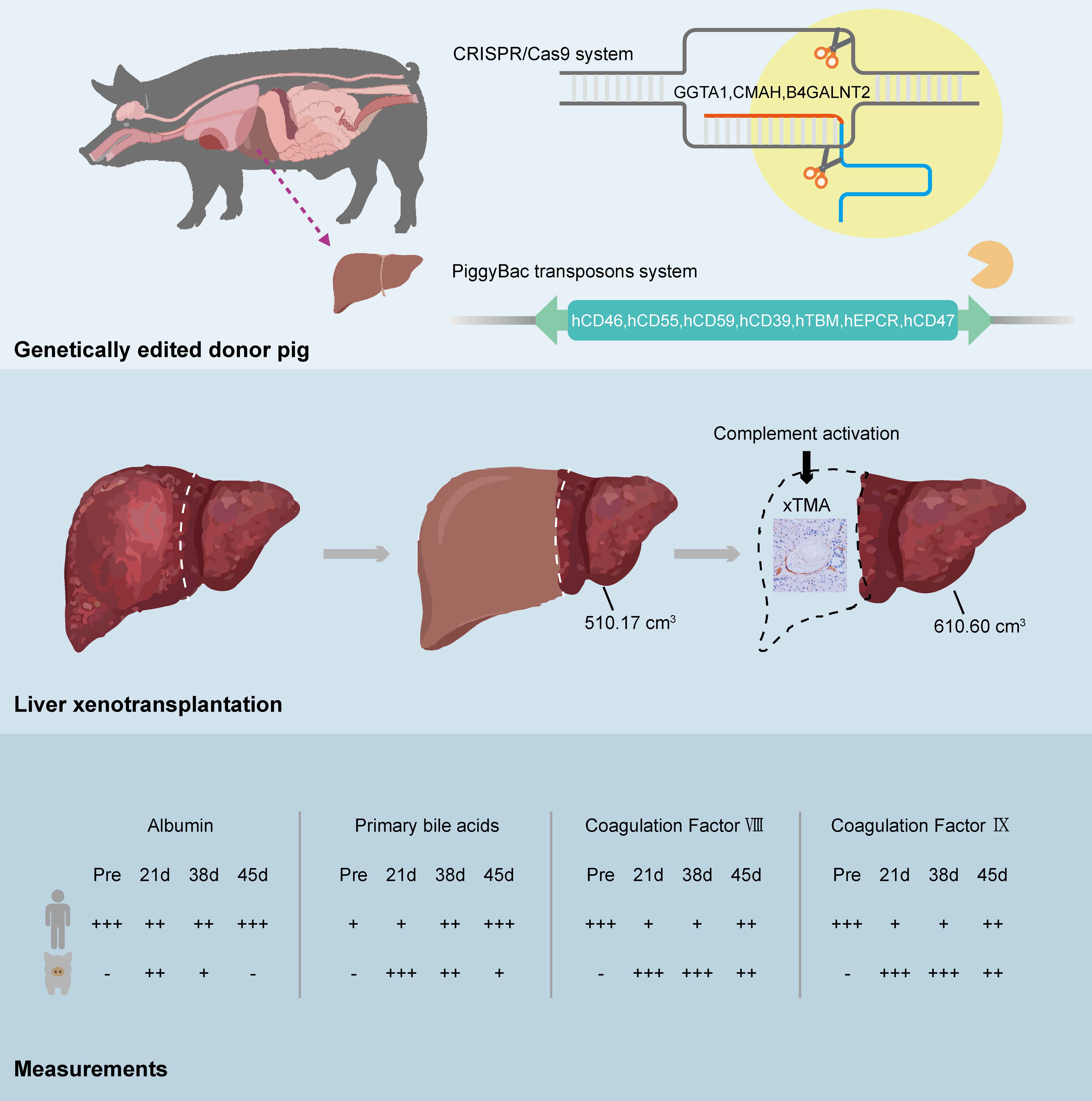A 71-year-old man in China became the first ever living recipient of a liver transplant from a genetically modified pig, as detailed in a new case report. The surgery was initially deemed successful, but complications arose, and the patient died on day 171 post-surgery. The team behind the procedure say it’s evidence that pig liver transplants can move beyond the theoretical, though we still have some way to go in refining this technology.
The patient was diagnosed with hepatitis B-related liver cirrhosis as well as a large tumor in the right lobe. Clinical assessment concluded that removing the right lobe – which is sometimes an option – wouldn’t be suitable in this case and would likely lead to liver failure. According to local guidelines, the patient was also not eligible for a liver transplant. On top of that, none of his immediate family members were found to be suitable donors of a partial liver.
“Given that all conventional treatment options were proved insufficient to save the patient’s life, the urgent challenge became identifying a viable alternative for liver transplantation,” the study authors write.
Donor organs are not in infinite supply. Transplant waiting lists number into the hundreds of thousands, and there have to be stringent eligibility criteria to ensure that the organs that are donated are used in the most effective way. Scientists around the world are working on ways to improve the situation with new techniques, and one approach that’s being explored is xenotransplantation: using organs from non-human animals.
The idea for xenotransplantation goes way back and features some questionable “science”, but modern xenotransplants have been attempted with kidneys and hearts as well as livers. First, these procedures were attempted in braindead recipients to check whether they were even feasible, but recent years have seen kidney and heart transplants in living recipients.
Still, only a handful of these surgeries have been performed overall, and still fewer in living recipients. In some cases – such as that of Towana Looney, who received a genetically modified pig kidney in 2024 before it unfortunately failed earlier this year – xenotransplants have been permitted as a last resort.
This was the situation for the patient in China. With no options left open to them, surgeons operated to remove his tumor and implant a liver from a genetically modified Diannan miniature pig.
The genetic modifications – 10 of them, in this case – are crucial to knock out pig genes that the human immune system may react to, as well to improve compatibility with the human body as much as possible.

Schematic illustrating how the genetic editing was performed using CRISPR/Cas9, how the surgery proceeded, and various markers measured in the patient over time.
Image credit: Journal of Hepatology / Zhang et al
The liver functioned well for the first month with no evidence of rejection, but on day 38 it had to be removed due to a serious complication called xenotransplantation-associated thrombotic microangiopathy (xTMA), which affected multiple organs. Despite treatment, the patient began to experience episodes of bleeding in his upper gastrointestinal tract on day 135 and eventually died on day 171.
Lead investigator Dr Beicheng Sun, President of the First Affiliated Hospital of Anhui Medical University, called the case “a pivotal step forward demonstrating both the promise and the remaining hurdles, particularly regarding coagulation dysregulation and immune complications, that must be overcome,” in a statement.
Others have shared this optimistic view. An accompanying editorial said the study was “a historic clinical milestone,” adding, “Technically, the operation was a success.”
However, both the study team and the editorial authors acknowledge that the serious complications experienced by this patient cannot be ignored.
“We can say that this represents a new step in the advancement of xenotransplant therapy, which continues to progress in clinical development, but it also highlights the significant obstacles that remain to be overcome,” commented Dr Beatriz Domínguez-Gil, Director of the National Transplant Organisation of Spain, to the Science Media Centre.
We’re still a long way from xenotransplantation being a viable alternative option for the vast majority of people requiring an organ transplant. However, each new attempt at these procedures provides new insights and lessons that can be learned.
Domínguez-Gil said that “these cases allow us to glimpse a future in which xenotransplantation is a clinical reality as a bridge therapy (particularly in the case of the liver) or as a destination therapy.”
The study is published in the Journal of Hepatology.
Source Link: First-Ever Living Recipient Of A Pig-To-Human Liver Transplant Survived For 171 Days